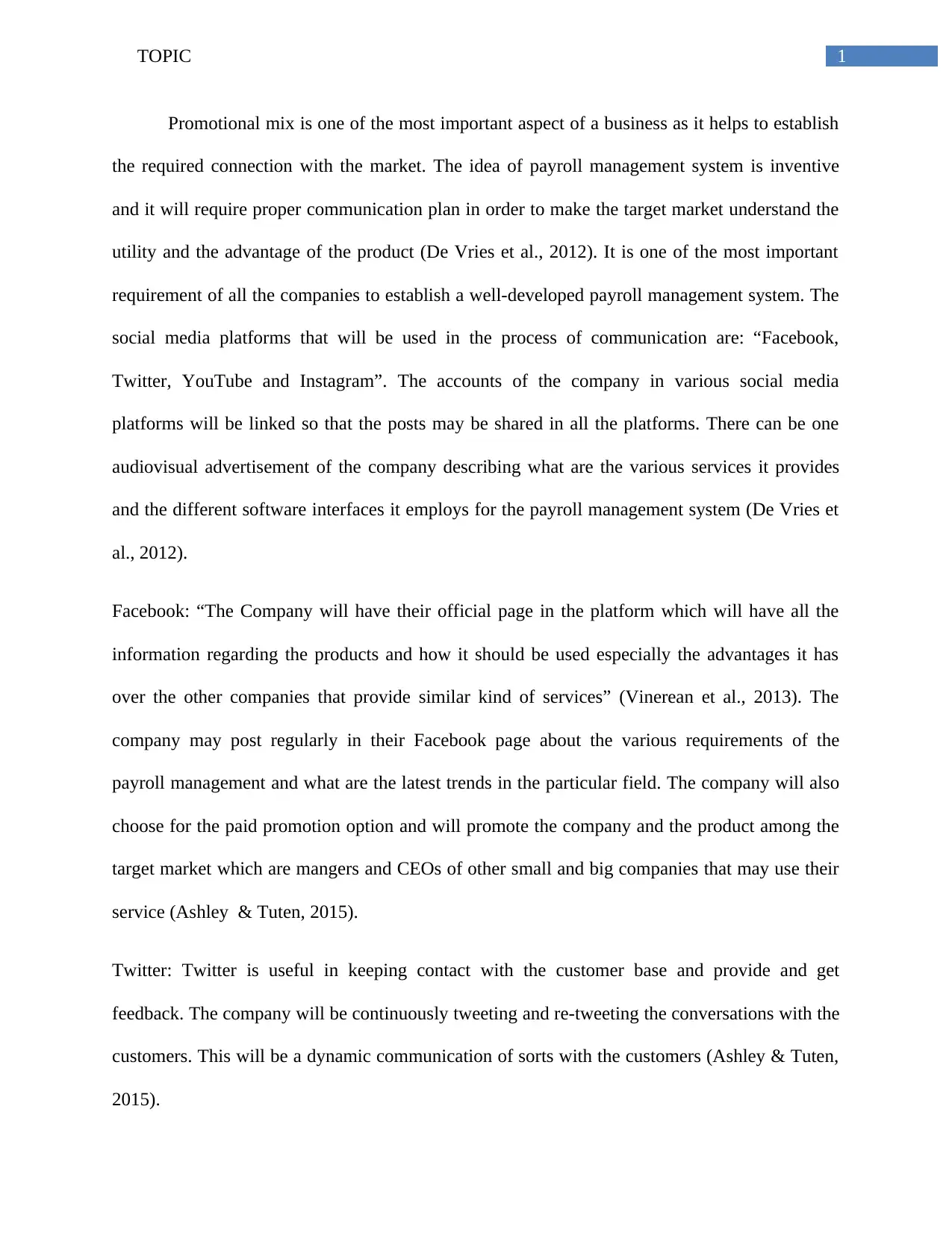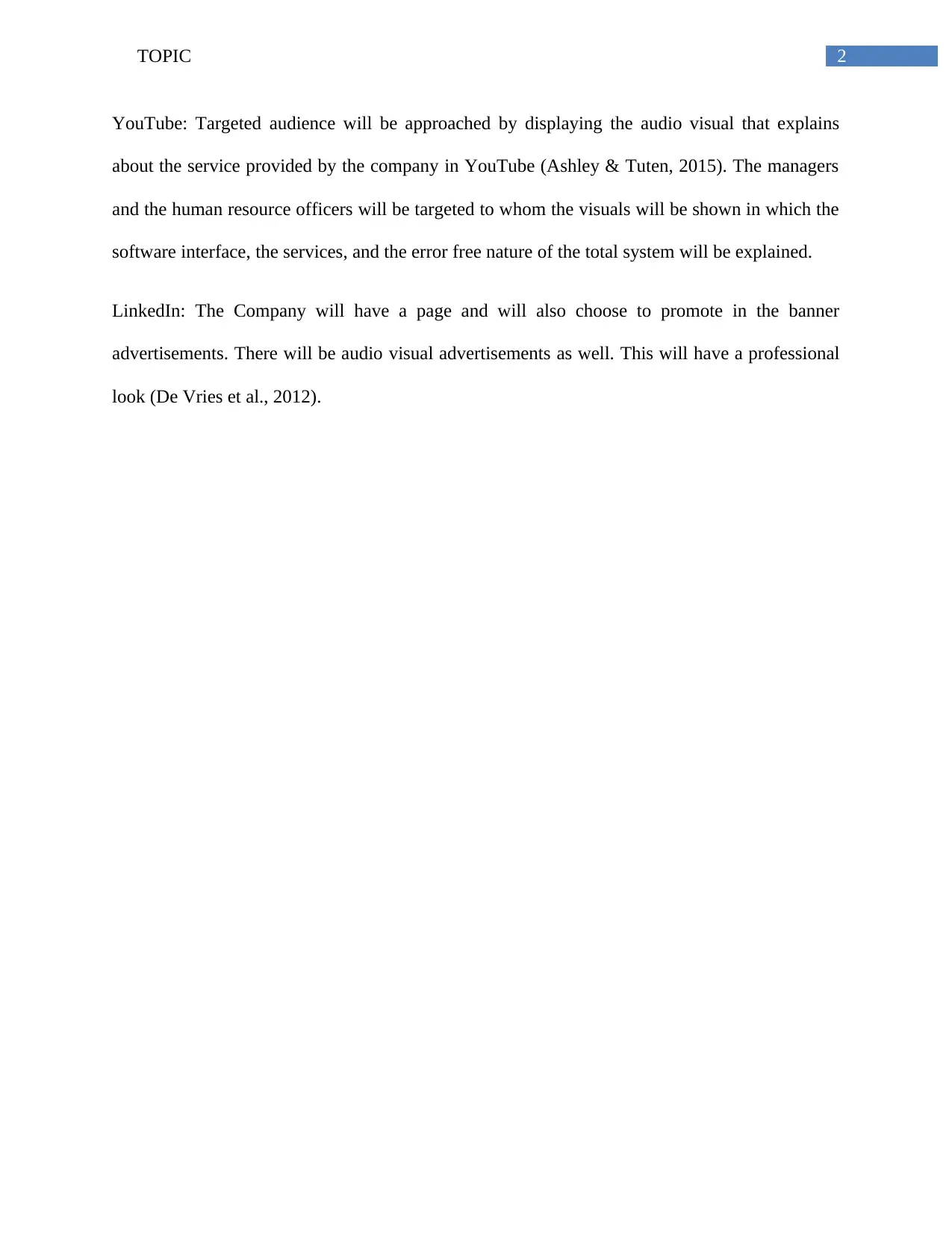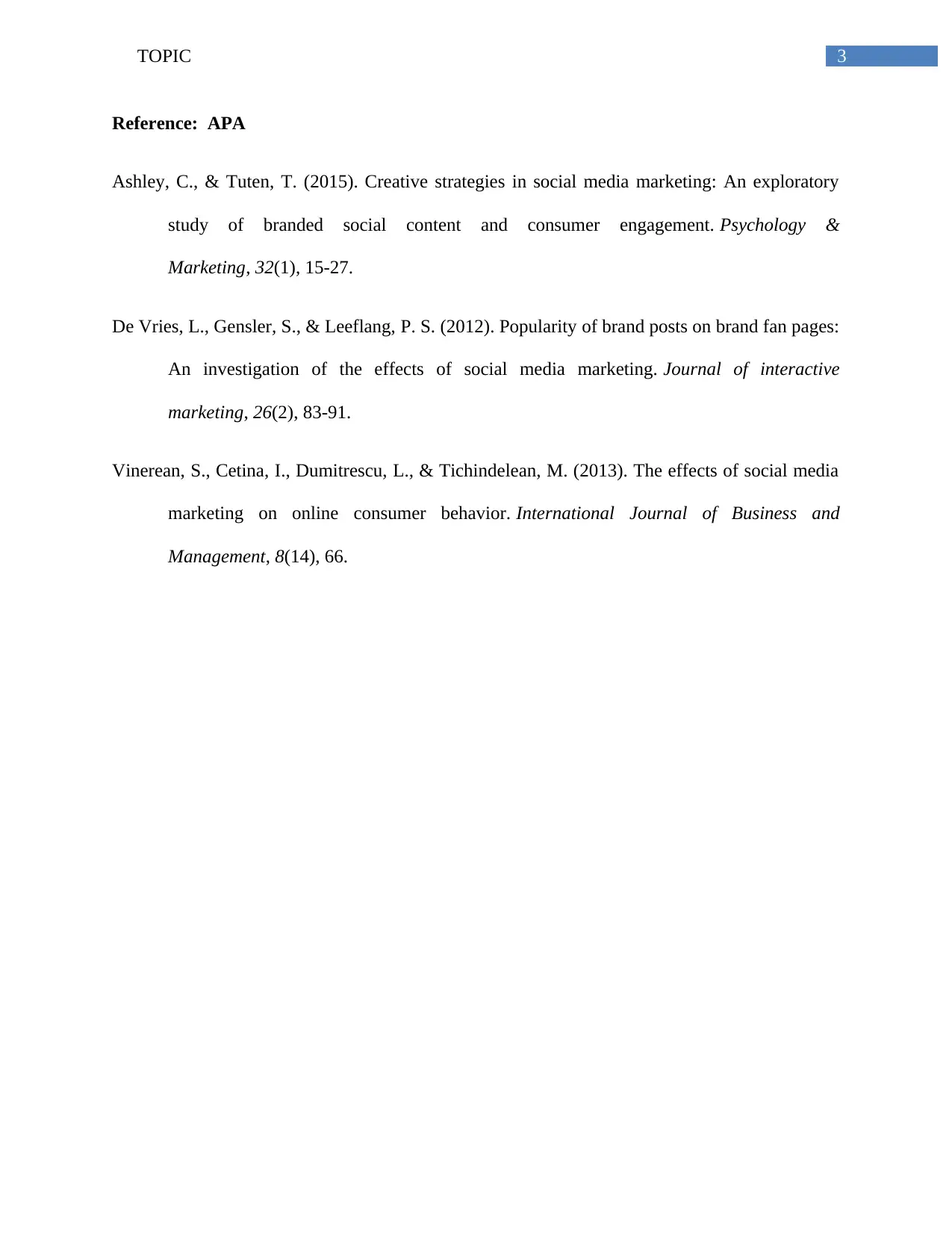Payroll Management System Marketing Strategy and Communication Plan
VerifiedAdded on 2021/05/27
|4
|619
|58
Report
AI Summary
This report focuses on developing a marketing and communication plan for a payroll management system. It begins by emphasizing the importance of a well-defined promotional mix to effectively communicate the value of the system to the target market. The report highlights the use of social media platforms such as Facebook, Twitter, YouTube, and LinkedIn to reach the target audience, which includes managers and CEOs of small to large companies. It details specific strategies for each platform, including company pages, paid promotions, and targeted audiovisual advertisements. The report discusses the importance of regularly updating social media content, engaging with customers, and showcasing the system's features, such as the software interface and error-free nature. References are provided in APA format, supporting the strategies outlined in the report.
1 out of 4











![[object Object]](/_next/static/media/star-bottom.7253800d.svg)